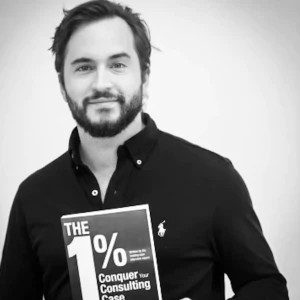How does one calculate the discount rate and growth rate? The discount rate seems an educated guess; what parameters should I consider for my decision? And what about the growth rate? Where do the 2% come from?


You will generally not be required to calculate the discount rate and growth rate, especially for terminal values, but make an educated guess on what it should be.
For the discount rate, the higher the risk of the investment being considered, the higher the discount rate should be. You can tell your interviewer something like “Since this is a luxury real estate investment, it carries moderate risk and corresponding discount rates of 12-15%. Would it be fair for me to use 12% as the discount rate, or do we know if the client has a preference on the discount rate we should us?"
On the growth rate, 2% is the accepted norm for terminal growth rates. You can similarly affirm with your interviewer before plugging it in.


Hi Tobias,
1) The discount rate seems an educated guess; what parameters should I consider for my decision?
The discount rate is a measure of the risk of the investment compared to the alternatives.
In a case interview normally it is either given (in this case they mentioned it was 12%) or you can ask if you can approximate to 5% or 10% for simplicity.

2) And what about the growth rate? Where do the 2% come from?
Most of the time in a case interview is assumed zero for simplicity. In this case, it was provided by the interviewer as 2%.

For a more technical analysis, you can check this:
▶ How to Find the Net Present Value of a Company
Best,
Francesco

Hi there,
I hardly came across interviewers who ask their interviewees to calculate a DCF model. It is more important to understand the concept of how the model works and therefore what the drivers of the value of a company are.
The terminal growth rate cannot be above the world GDP growth rate - otherwise the world GDP would only be generated by the company at infinity. 2-3% in real terms is a good estimate.
The discount rate is influenced by the risk free rate and the risk of the investment relative to the broad market. The current hawkish central bank moves bring down valuations because the risk free rate is increased. For the interview it should be enough if you qualitatively are able to assess the risk of a company relative to market (with good rationale). E.g. consumer non-discretionary with lower relative risk than consumer discretionary.
Hope this helps.
Andreas

These kind of questions are quite rare, this is not a finance interview.
In any case, just ask for them… If not given, any long term growth rate is usually related to long run GDP growth + inflation (4%: 2%+2%). Discount rates are usually risk free rate (4-5% right not in the US) + market premium (5%) * (1+adjustment given risk being below or above market average).
In other words: If risk is higher than the average in the economy, you would go above 10%, if it is lower, you would go below. So being in the range of 7-15% would be ok.

Hi Tobias,
I think this is an interesting question that may be relevant for many people. I would be happy to share my thoughts on it:
- First of all, in this specific case study, both pieces of information are provided by the interviewer. However, the source of the figures is unknown.
- Moreover, I would highly advise you not to worry about such information since it always needs to be provided. When in doubt, assuming a 10% discount rate should be sufficient for any case study.
If you would like a more detailed discussion on how to address your specific situation, please don't hesitate to contact me directly.
Best,
Hagen

Hi there,
You will pretty much always be given both!
When asking, you can propose 10% for discount ("standard" for a case).
Remember that, with NPV, you have to take discount rate minus growth rate of the cash flows












